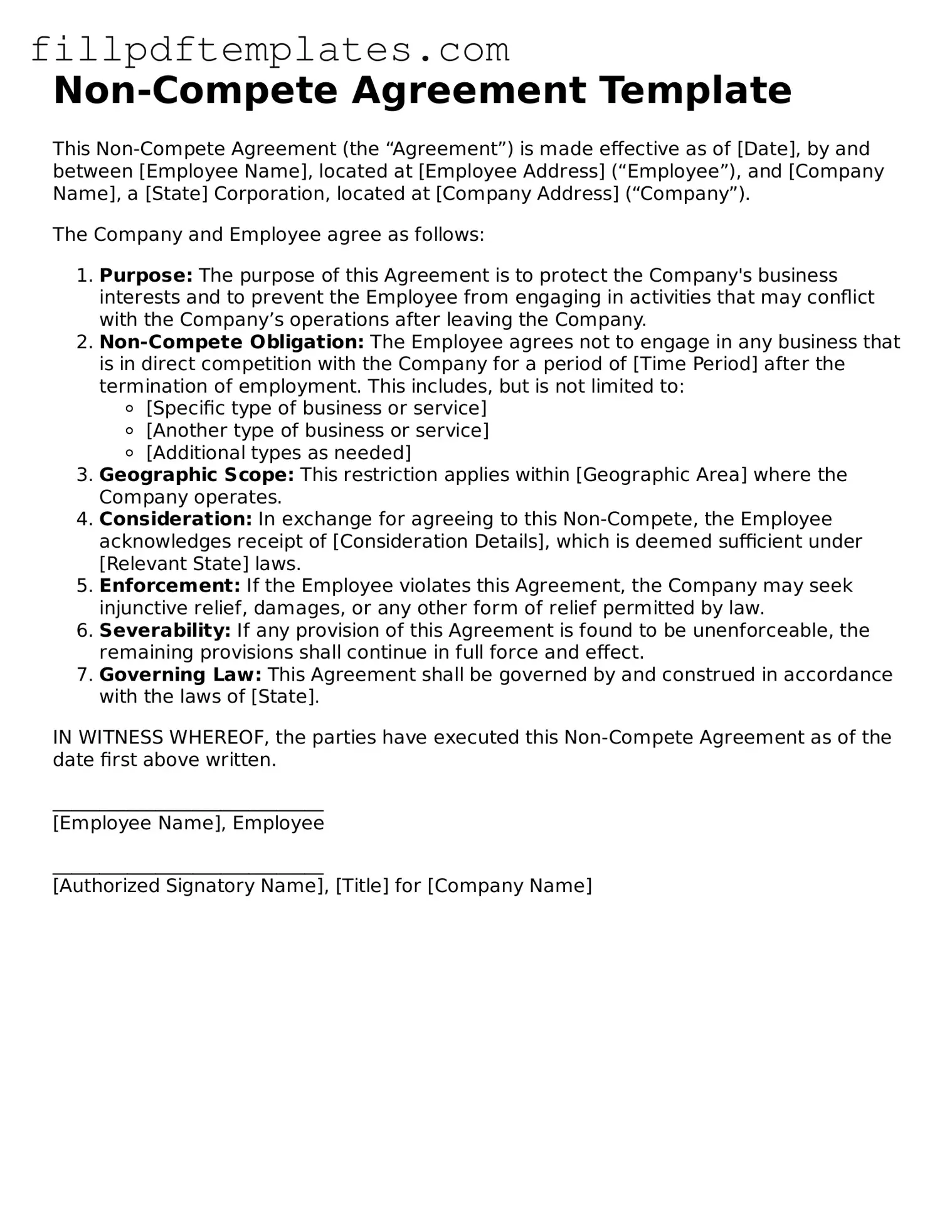Non-Compete Agreement Template
This Non-Compete Agreement (the “Agreement”) is made effective as of [Date], by and between [Employee Name], located at [Employee Address] (“Employee”), and [Company Name], a [State] Corporation, located at [Company Address] (“Company”).
The Company and Employee agree as follows:
- Purpose: The purpose of this Agreement is to protect the Company's business interests and to prevent the Employee from engaging in activities that may conflict with the Company’s operations after leaving the Company.
- Non-Compete Obligation: The Employee agrees not to engage in any business that is in direct competition with the Company for a period of [Time Period] after the termination of employment. This includes, but is not limited to:
- [Specific type of business or service]
- [Another type of business or service]
- [Additional types as needed]
- Geographic Scope: This restriction applies within [Geographic Area] where the Company operates.
- Consideration: In exchange for agreeing to this Non-Compete, the Employee acknowledges receipt of [Consideration Details], which is deemed sufficient under [Relevant State] laws.
- Enforcement: If the Employee violates this Agreement, the Company may seek injunctive relief, damages, or any other form of relief permitted by law.
- Severability: If any provision of this Agreement is found to be unenforceable, the remaining provisions shall continue in full force and effect.
- Governing Law: This Agreement shall be governed by and construed in accordance with the laws of [State].
IN WITNESS WHEREOF, the parties have executed this Non-Compete Agreement as of the date first above written.
_____________________________
[Employee Name], Employee
_____________________________
[Authorized Signatory Name], [Title] for [Company Name]
